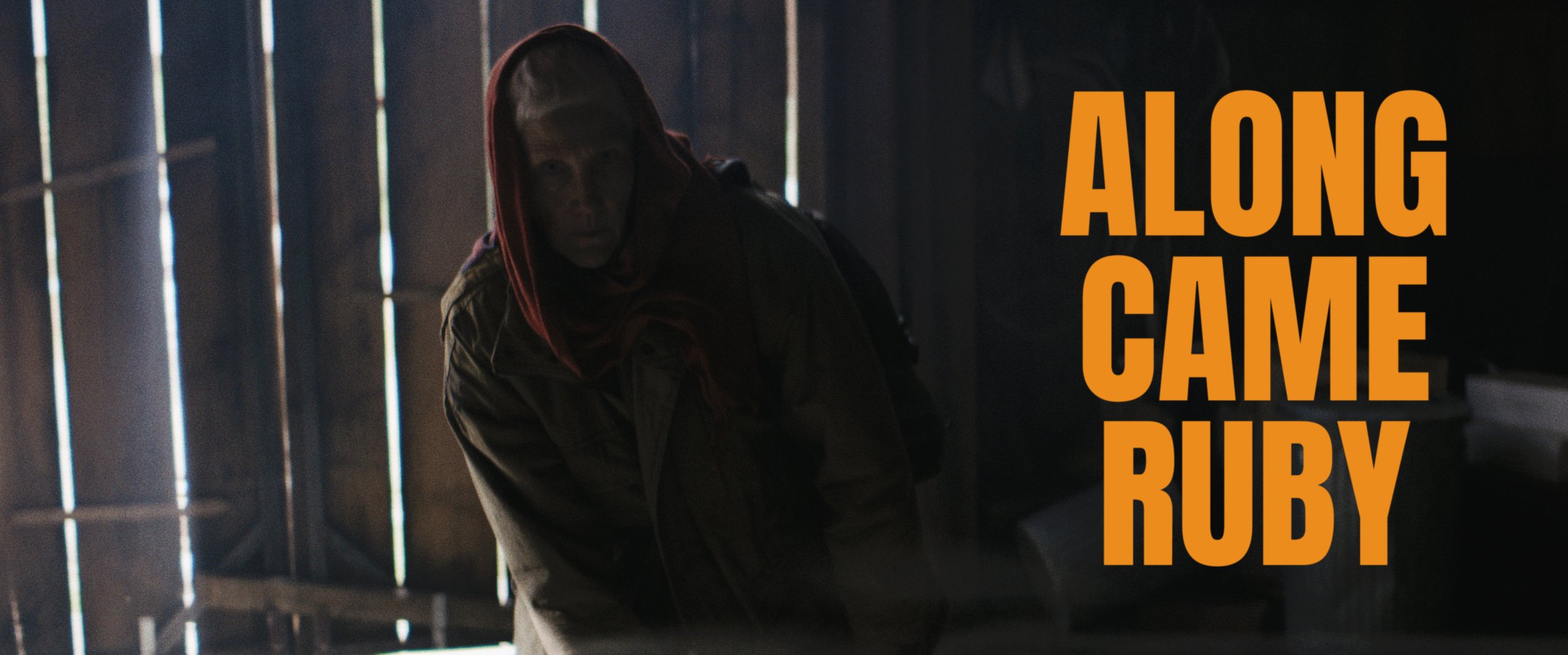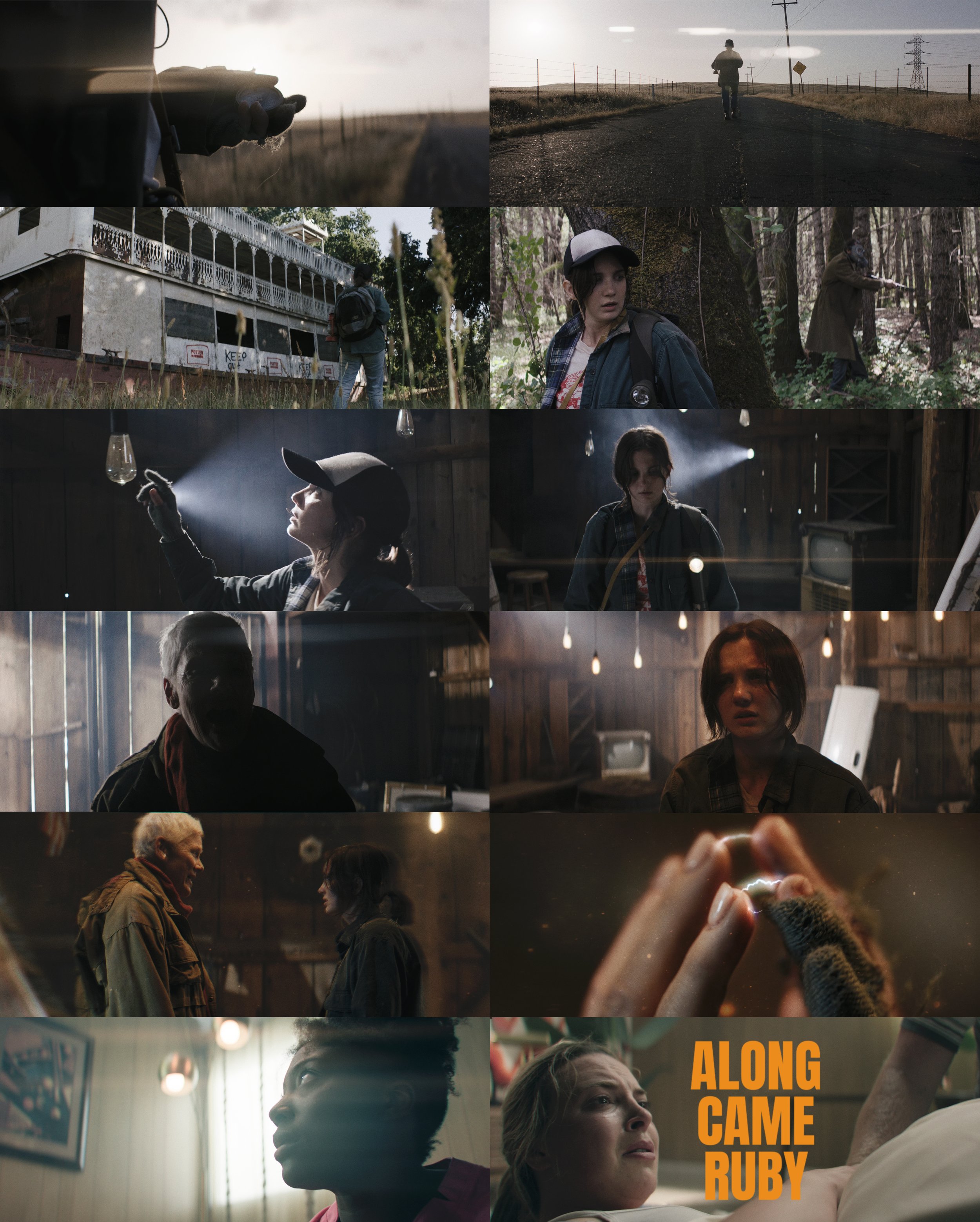In an exclusive interview with filmmaker Riccardo Suriano, the creative director behind the evocative short film “Along Came Ruby,” we delve into an extraordinary narrative journey that defies traditional storytelling boundaries. Suriano shares his profound expedition in crafting a post-apocalyptic tale woven with threads of human resilience, hope, and the intangible connections that transcend time and space.
“Along Came Ruby” stands as a testament to Suriano’s daring vision, encapsulating the grandeur of a feature film’s three-act structure within a concise 20-minute narrative. Suriano aimed to construct an immersive experience that traverses diverse timelines and manipulates time paradoxes to paint a poignant portrait of survival, grief, and the indomitable human spirit.
Read this exclusive conversation with Riccardo Suriano as he unveils the thematic richness, drawing from his cultural roots in Rome for artistic inspiration. Discover the transformative potency of storytelling as he intricately weaves a cinematic tapestry that challenges perceptions, stimulates contemplation, and exalts the resilience inherent in the human experience in “Along Came Ruby.”
Watch on our Daily Short Picks
“Along Came Ruby” is set in a post-apocalyptic world. Can you discuss the inspiration behind creating this dystopian setting and how it influenced the narrative?
The idea for this post-apocalyptic world in ‘Along Came Ruby’ came to me as I was thinking about how our environment shapes us. This world is more than just a desolate backdrop; it’s a reflection of the inner turmoil and struggle we all face in life. It’s about finding hope in hopelessness. The starkness of this world really brings out the raw emotions we’re exploring. It’s about how even in the bleakest of places, the human spirit finds a way to shine through. This contrast, it’s powerful, and it really drives the narrative. It’s about pushing characters to their limits and seeing what they’re really made of.

The film revolves around the journey of Ruby, a determined young woman. What qualities or characteristics did you emphasize to make Ruby a compelling and relatable protagonist?
Ruby, she’s the heart and soul of our story. I wanted her to be someone everyone could relate to. She’s got this incredible inner strength, but she’s also vulnerable. She’s searching for something more, something deeper. Her journey is about that unquenchable human spirit, the kind that keeps pushing forward against all odds. And that’s what makes her journey so relatable and real. She embodies that fire we all have inside us, the one that lights up even in the darkest times. Ruby’s character is about showing that strength isn’t just about physical prowess; it’s about emotional resilience.
The enigmatic old woman plays a significant role in the story. Can you delve into the character’s backstory and her connection to Ruby, as well as her role in revealing the secrets of the past?
The old mysterious woman, she’s a key character. She’s like this bridge between what was, what is, and what will be. In my mind, she and Ruby represent two stages of life. Ruby’s at the start, all dreams and hope and unshaken belief. And the old woman, she’s at the other end of the spectrum, where life’s experiences have made her loose hope. Their interaction is like a conversation between youth and age, each learning from the other, each reflecting what we gain and lose as we travel through life. It’s about reconciling these two stages and finding a balance between the idealism of youth and the realism of age.

The film explores themes of grief and memories. How did you approach depicting these complex emotional states in a sci-fi Context, and what message or takeaway do you hope viewers will have regarding these themes?
Grief and memory in a sci-fi setting, it’s a unique challenge. These themes, they’re almost characters themselves, shaping the world around our characters. My aim was to delve into how these emotions are part of our very essence. Using the sci-fi backdrop, we could really play with these concepts, show how they mold our realities, our identities. It’s about exploring these deep, complex emotions in a setting that’s both familiar and utterly alien. The film uses the sci-fi elements to amplify these themes, making the audience reflect on how we deal with grief and how our memories shape us.
The concept of a connection that transcends time and space is intriguing. How did you weave this element into the narrative, and what effect does it have on the characters and their journey?
This concept is central to the film. It’s about the interconnectedness of life, how our past, present, and future are all woven together. This theme adds so many layers to the story, making the audience question the nature of relationships, the impact of choices. It’s a narrative thread that weaves through the entire film, adding intrigue and depth to the characters’ journey. It’s about showing how time and space can bend and stretch, and how these elements can profoundly affect our lives.
The post-apocalyptic genre often raises questions about the resilience of the human spirit. How do you see “Along Came Ruby” contributing to this larger conversation about hope and survival?
‘Along Came Ruby’ explores the resilience of the human spirit in a unique way. It’s not about finding a definitive ray of hope or a clear path forward. Instead, the film delves into the complexities of the human condition, where sometimes resilience is about enduring the unknown, the unresolvable. It’s a narrative that doesn’t shy away from the harsh realities of life. The film is meant to leave you questioning, to challenge your perceptions of what it means to be resilient in a world where answers aren’t always clear or comforting.
Can you discuss the production design and cinematography choices that helped bring this world to life on screen?
Bringing this post-apocalyptic world to life, it was all about the details. Every visual element, every choice of location, color, lighting, it was all carefully planned. We wanted to create an atmosphere that not only told a story visually but also evoked deep emotions, that pulled the audience right into Ruby’s world. The production design and cinematography were crafted to mirror the emotional journey of the characters, to create a world that was as rich in detail as it was in narrative depth.
Sci-fi often allows for creative exploration of technology and speculative elements. While keeping it quite minimal, how did you incorporate these elements into the film, and how do they enrich the storytelling?
The sci-fi elements in the film are there to enhance the story, not dominate it. They’re like subtle hints, adding depth and a touch of wonder to the narrative. They support the story, enriching it without taking away from the human element at its core. The sci-fi aspects were carefully chosen to complement the themes of the film, to add a layer of complexity to the narrative without overwhelming it.
How do you envision the film resonating with viewers, and what discussions or reflections do you hope it sparks regarding the themes of resilience, memory, and human connection in the face of adversity?
I hope ‘Along Came Ruby’ leaves viewers in a reflective state, pondering over the themes presented. It’s not a story that offers clear-cut solutions or a typical feel-good ending. Instead, it’s about presenting a narrative that mirrors the often ambiguous and challenging nature of life. The film is meant to provoke thought, to leave the audience with questions about resilience, memory, and human connection in the face of adversity. It’s about exploring these themes in a way that doesn’t necessarily provide comfort, but rather encourages a deeper contemplation of the complexities of the human experience.
Do you have any tips for fellow filmmakers looking to make a post-apocalyptic short film?
For filmmakers looking to venture into the post-apocalyptic genre, my advice is simple: focus on the human story. Yes, the setting is important, but what really grips an audience is how the characters navigate this world. Be creative, use your resources wisely, and never lose sight of the story you want to tell. It’s about finding that balance between the spectacle of the setting and the depth of the character’s journey.
Can you tell us which short films have been your favorite to watch over the last few years?
In recent years, I’ve been really impressed by a number of sci-fi and horror short films. Some of my favorites include ‘Firebase’ by Neil Blomkamp, ‘Snow Steam Iron’ by Zack Snyder, and ‘San Junipero’ from the Black Mirror series. In the horror genre, films like ‘The Strange Thing About the Johnsons’ by Ari Aster, and ‘Thanksgiving’ by Eli Roth have stood out. These films push the boundaries of storytelling and are a testament to the creativity and innovation that’s possible in short filmmaking.

